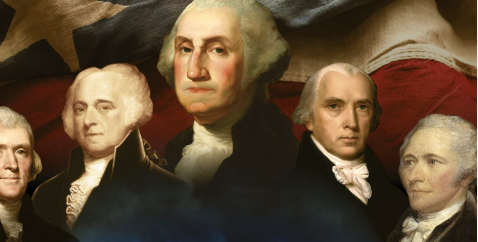1. Paul Revere’s Midnight Ride Was a Solo Mission
For generations, schoolbooks taught that Paul Revere rode alone at midnight shouting, “The British are coming!” to warn the colonists. In truth, Revere was one of several riders that night, including William Dawes and Samuel Prescott. Furthermore, the famous phrase was never spoken — most colonists still considered themselves British. This myth gained popularity thanks to Henry Wadsworth Longfellow’s poem in 1861, which dramatically exaggerated the event to stir patriotic emotion during the Civil War. The romanticized version overshadowed historical accuracy, creating a narrative that still dominates today despite clear historical records to the contrary.
2. All Founding Fathers Signed the Declaration on July 4th
One of the most widely believed myths in American history is that the Declaration of Independence was signed on July 4, 1776. While July 4 marks the day Congress adopted the final draft, the actual signing occurred over several weeks — with most delegates signing on August 2. Some signed even later. This simplification helped solidify a singular date for Independence Day celebrations, giving the public a symbolic reference point. However, it also erased the complexity of the event’s timeline, leading to widespread historical confusion.
3. George Washington Wore Wooden Teeth
The image of George Washington with wooden dentures is so iconic that it’s often taken as truth. In reality, Washington never wore wooden teeth. His dentures were made from a combination of materials — ivory, gold, and even human teeth, some of which were sourced from enslaved individuals. The myth likely originated due to the worn, stained appearance of ivory over time, which resembled wood. While the wooden teeth story seems harmless, it has served to mask more uncomfortable aspects of early American history, particularly the use of enslaved people for personal benefit.
4. The Civil War Was About States’ Rights, Not Slavery
A deeply persistent myth suggests that the Civil War was primarily about states’ rights. However, historical documents — including declarations of secession — make it clear that slavery was the central issue. Southern states feared losing their economic power, which was built on enslaved labor. The states’ rights argument gained traction post-war as a way to soften the Confederacy’s image, especially during the Jim Crow era. This revisionist framing has had long-term implications, shaping textbooks and political narratives for decades.
5. The First Thanksgiving Was a Peaceful, Joyful Feast
The popular image of Pilgrims and Native Americans joyfully sharing a meal in 1621 is a drastically oversimplified version of events. While a feast did occur, it was more of a diplomatic meeting amid severe hardship, disease, and conflict. Native Americans, particularly the Wampanoag, were facing immense pressure and saw cooperation as a survival tactic. The Thanksgiving holiday was reshaped in the 19th and 20th centuries to promote unity during turbulent times like the Civil War and the Great Depression. The myth overshadows the reality of colonization and Native displacement that followed.
6. Albert Einstein Failed Math as a Student
A common story used to inspire students claims that Albert Einstein failed math in school — proof that anyone can overcome academic struggles. However, this couldn’t be further from the truth. Einstein excelled in mathematics from a young age, mastering calculus before age 15. The myth likely arose due to confusion over grading systems in Switzerland, which used a reversed numerical scale. Although the story was debunked decades ago, it persists because it humanizes genius and aligns with the American cultural theme of triumph over adversity.
Why Unpacking These Myths Matters
Historical myths endure not because of facts, but because of the emotions they evoke — pride, unity, or even comfort. However, clinging to romanticized or inaccurate stories prevents society from fully understanding its past. Uncovering these myths is not about discrediting history but about revealing its full complexity. Only through accurate storytelling can a nation genuinely learn, grow, and confront the legacies it carries.

